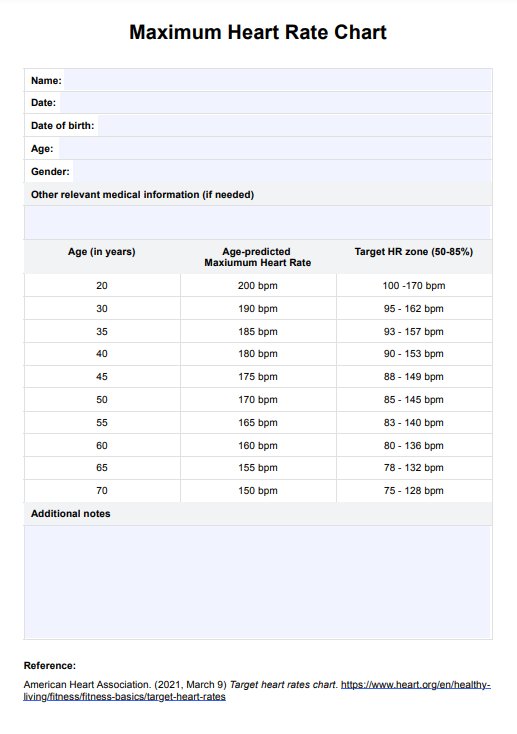One's maximum heart rate can be estimated by subtracting age from 220. For example, if a person is 30 years old, their estimated maximum heart rate would be 190 beats per minute (BPM).

Maximum Heart Rate Chart
Help your patient maximize their fitness routine by giving them a copy of our Maximum Heart Rate Chart template.
Use Template
Maximum Heart Rate Chart Template
Commonly asked questions
Knowing one's maximum heart rate helps determine the intensity of one's workouts, ensuring one exercises within a safe and effective range for one's fitness goals.
Generally, maximum heart rate does not significantly increase with training. However, one's heart's efficiency and endurance can improve, allowing one to work out at higher intensities for longer periods.
EHR and practice management software
Get started for free
*No credit card required
Free
$0/usd
Unlimited clients
Telehealth
1GB of storage
Client portal text
Automated billing and online payments











